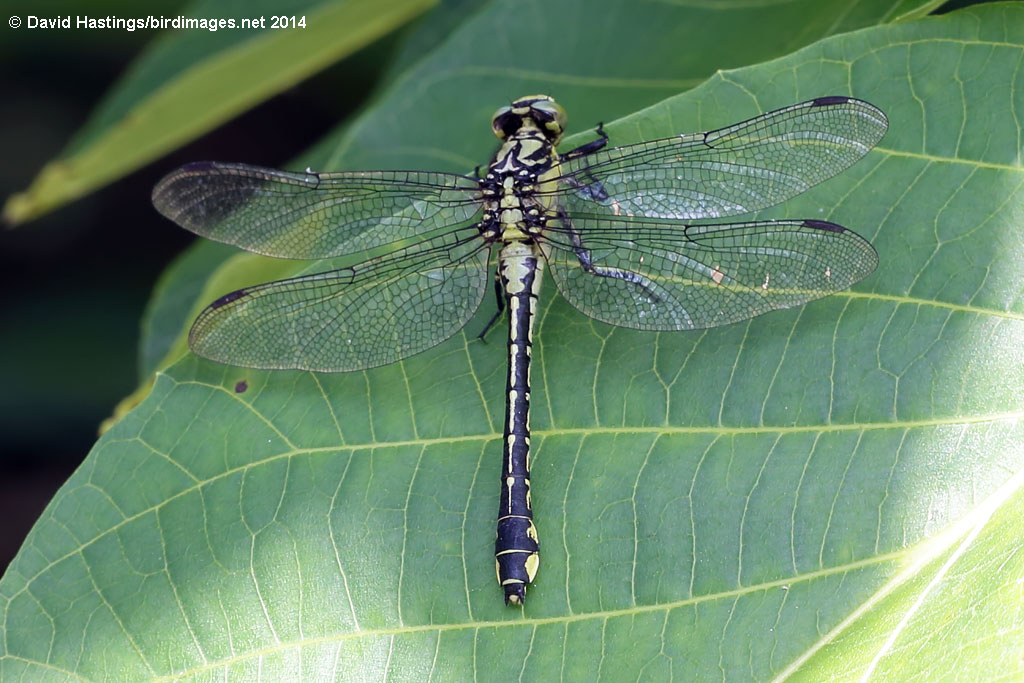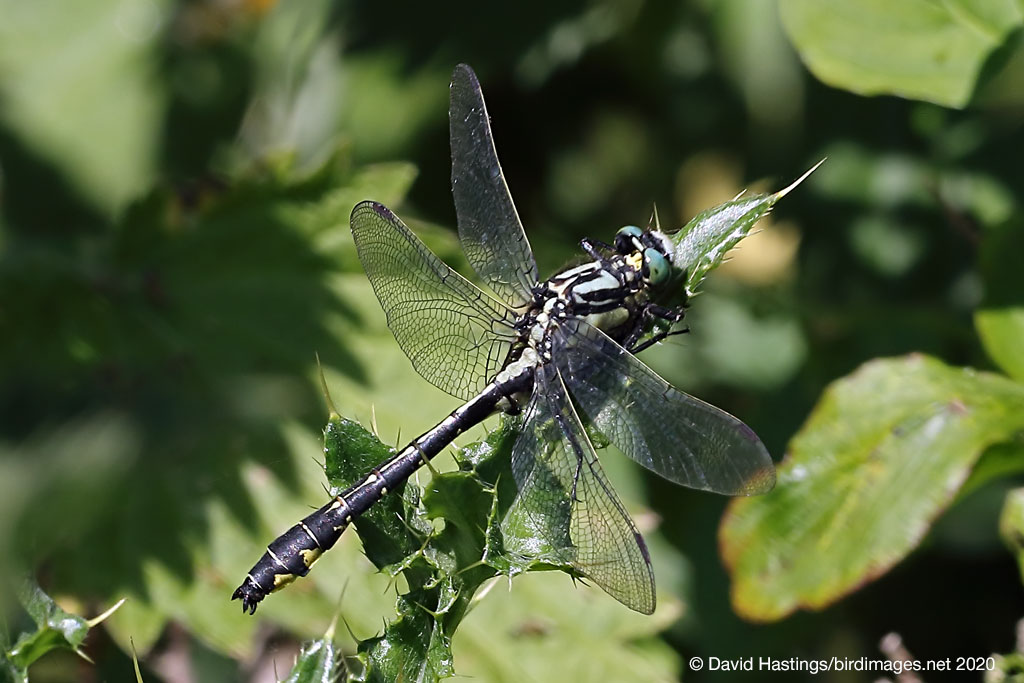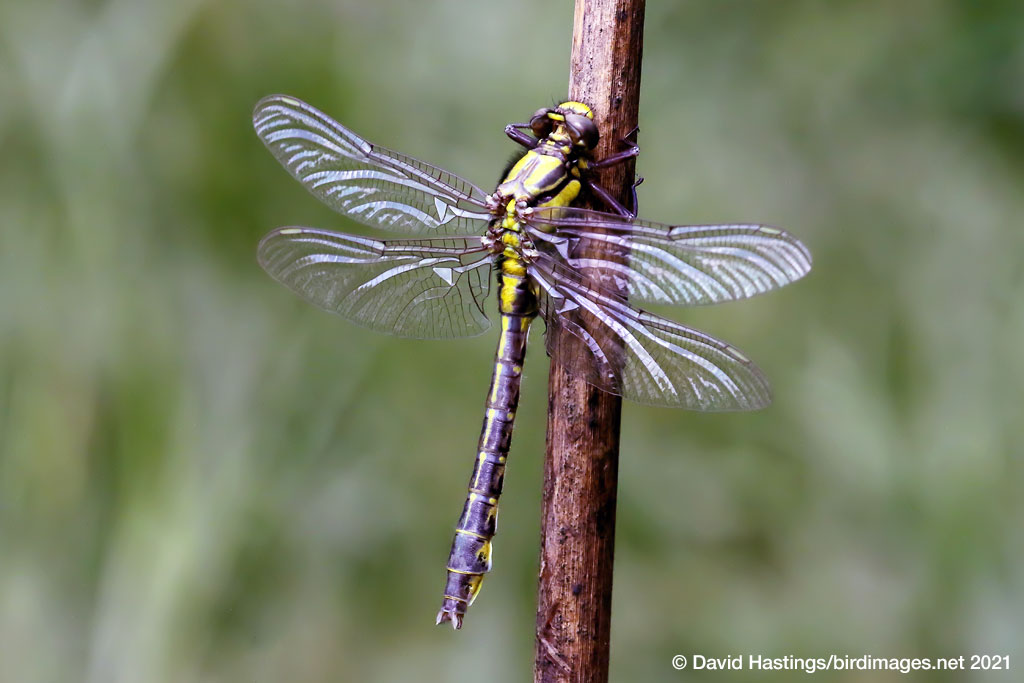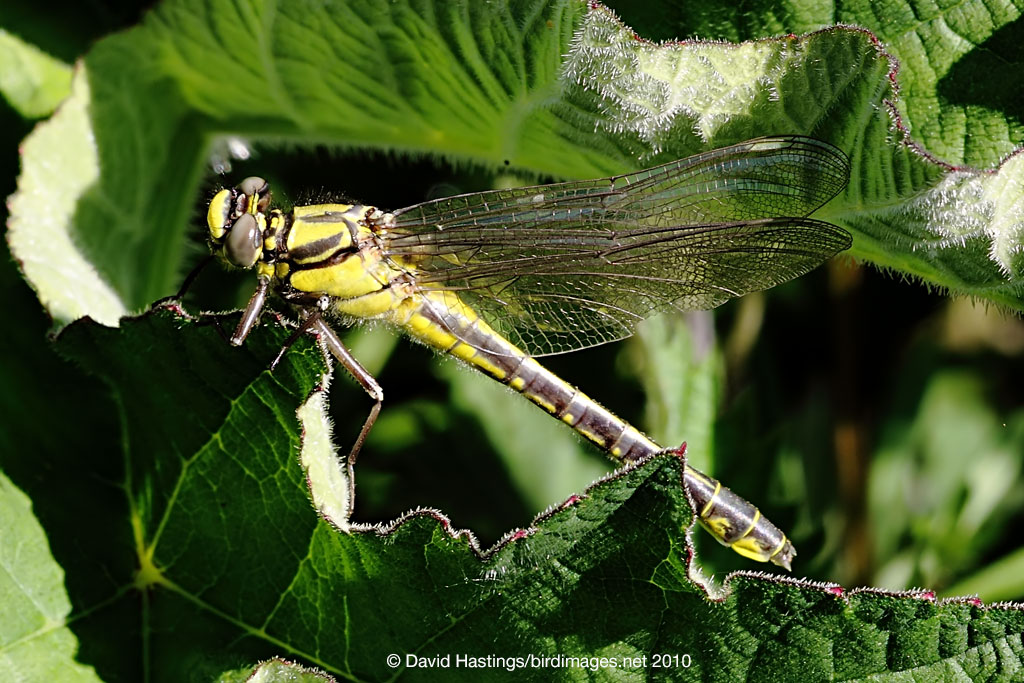Common Clubtail (Gomphus vulgatissimus) | Species | ||||||||||||||||||||||||||||||||||||||||||||||||||||||||||||||||||||
Male. Taken at the Bistritza river, Bulgaria, on June 24th 2014. (© David Hastings) (1/80th sec at f10. Click image for larger version) Male. Taken near Goring, Oxon, on May 30th 2020. (© David Hastings) (1/320th sec at f13. Click image for larger version) Teneral male. Taken near Goring, Oxon, on May 27th 2021. (© David Hastings) (1/800th sec at f13. Click image for larger version) Teneral female. Taken near Goring, Oxon on May 23rd 2010. (© David Hastings) (1/60th sec at f16. Click image for larger version) DescriptionWingspan: 56 - 66mm; Body length: 45 - 50mm The Common Clubtail is a medium sized dragonfly with a distinctively club-shaped abdomen. Females and teneral males are mainly black with extensive yellow markings on the thorax and abdomen. As the male matures most of the yellow markings turn green although the spots on the sides of abdominal segments 7-9 remain bright yellow. Unlike most dragonflies the eyes are separate and do not meet at the top of the head. In mature adults they are dull green. It is found in southern England along unpolluted, slow-flowing streches of rivers, such as the Thames, Severn and the Arun. This species is associated with rivers with silty substrates, which are favoured as the larvae are burrowers, living in the mud and silt. Inhabited reaches are typically adjacent to woodland, as it provides cover for the adults. The eggs are either dropped into water in flight or dipped onto the surface. The larvae live in fine sediment for 3-5 years before emerging. The main flight period is May and June. Common Clubtails spend most of their adult life away from water, perching on the ground, on bushes and in treetops. They are often found in woodland and use the tree canopy more than most species. This behaviour makes them difficult to locate. This is a near-threatened species and is on the Red Data List (so cannot be handled without a licence). Earliest UK sighting: 23rd May ; Latest UK sighting: 4th June Sightings
| |||||||||||||||||||||||||||||||||||||||||||||||||||||||||||||||||||||




